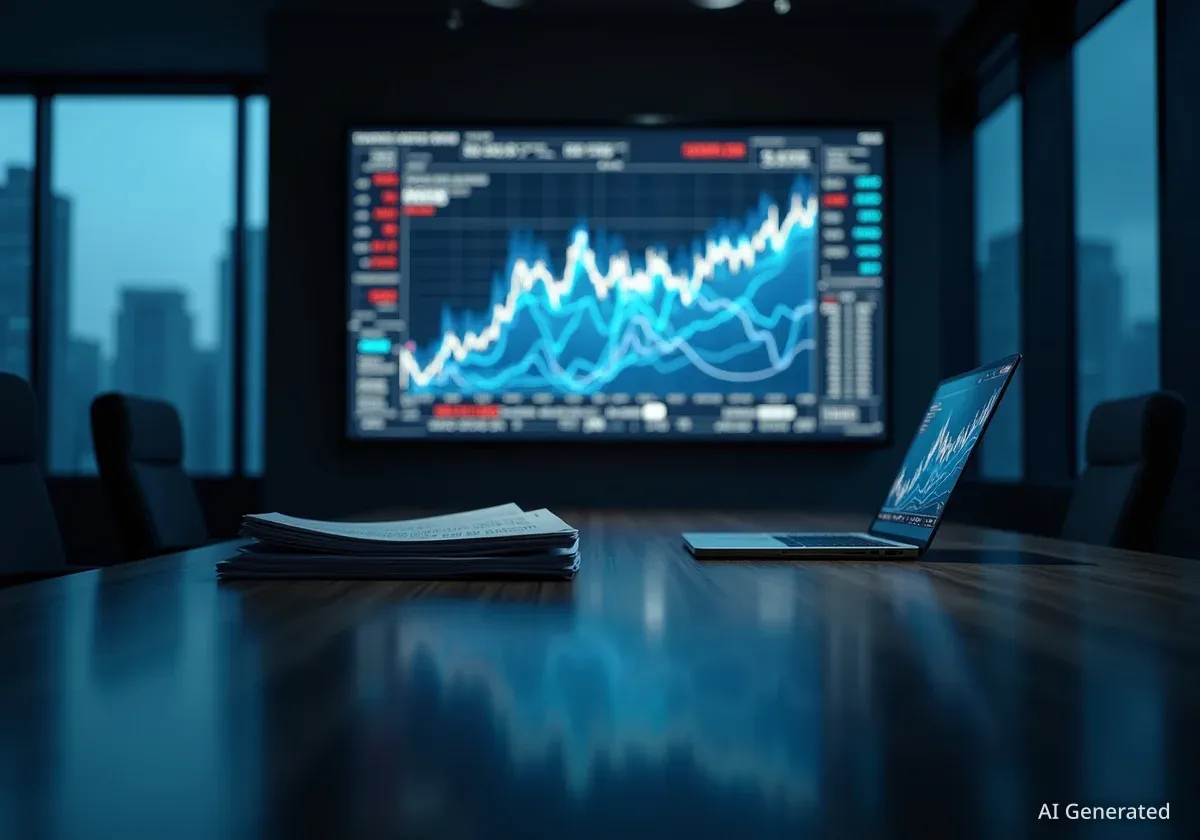The artificial intelligence sector, which is seeing nearly $400 billion in investment this year, faces a significant systemic risk due to its increasing dependence on OpenAI, according to a veteran Wall Street analyst. This reliance, coupled with massive corporate spending and debt issuance, is raising concerns about the formation of a potential debt bubble that could destabilize the entire market.
Ted Mortonson, a managing director at Baird with over three decades of experience, suggests that any financial stumble by OpenAI could have a cascading negative effect across technology and other industries. The company's aggressive spending and negative cash flow are central to this growing concern.
Key Takeaways
- The AI market's health is increasingly linked to the financial stability of a single company, OpenAI.
- Massive spending by tech companies, funded by substantial debt, is fueling fears of a potential "debt bubble."
- Analyst Ted Mortonson warns that if OpenAI faces financial trouble, the entire AI investment trend could falter.
- Additional risks include rising consumer energy costs, supply chain bottlenecks for critical components, and volatile retail trading behavior.
The Central Role of OpenAI in the AI Boom
The current surge in artificial intelligence investment, largely initiated by the launch of ChatGPT, has positioned OpenAI as a critical player. Recent multibillion-dollar agreements have further cemented its central role in the industry. However, this prominence is now viewed as a potential single point of failure for the market.
Technology companies are pouring hundreds of billions of dollars into AI to avoid falling behind, creating immense pressure to maintain spending momentum. According to Mortonson, OpenAI is operating with a significant negative free cash flow, funding its expansion and acquisitions through substantial capital raises.
"The kingpin in all this is OpenAI, and if OpenAI stumbles, this AI trade is going to stumble," said Mortonson during an interview with MarketWatch.
This situation forces the company to continuously seek funding to support its operations and growth, a strategy that introduces considerable risk if market conditions change or investor confidence wanes.
Concerns Over a Growing Debt Bubble
The aggressive spending in the AI sector is largely financed by issuing debt, a trend that has some financial experts worried. Mortonson highlighted a recent $18 billion bond sale by Oracle, which included 40-year maturities, as an example of "creative" financing that reflects the high stakes and uncertainty in the tech industry.
He noted that his institutional clients are expressing concern about a potential "debt bubble" forming, built on highly optimistic assumptions about future AI revenue. The core issue is that while spending is happening now, a significant return on these investments is not expected for another two to three years.
The Gartner Hype Cycle
Mortonson places the current AI market at the "peak of inflated expectations" on the Gartner hype cycle. This model describes the maturity and adoption of technologies. This peak is often characterized by maximum market excitement and valuations that are "priced to perfection," with little room for error or downside risk. Historically, this phase is followed by a "trough of disillusionment" as initial expectations are not met.
The pressure to build out AI infrastructure, particularly data centers, is immense. "For now, if the companies don’t build, they’re screwed," Mortonson explained, highlighting the competitive necessity that drives the debt-fueled spending spree.
Four Key Risks Facing the AI Market
Beyond the reliance on OpenAI, Mortonson identified four specific challenges that could undermine the current AI boom. These factors create a complex risk environment that he advises investors to navigate with caution.
1. Consumer and Political Backlash
The enormous energy demands of AI data centers are contributing to rising utility prices for consumers across the country. According to Mortonson, this is leading to public frustration, as households face higher bills to power a technological revolution they "didn’t ask for."
This consumer pushback is attracting the attention of politicians, creating a political risk that is difficult for financial markets to quantify. Analysts at Bernstein noted in a recent report that after a decade of flat power demand, the needs of AI are causing a significant increase, potentially straining the U.S. power grid.
2. Supply Chain Bottlenecks
The rapid advancement of AI hardware, led by companies like Nvidia, is outpacing the capabilities of the existing supply chain. "Nvidia is pushing high-performance compute architecture like no company ever in history has pushed it," Mortonson stated. He warned that the supply chain is not fully prepared for the scale and complexity of these new technologies, which could lead to critical component shortages and delay progress.
The Race for Power
The speed of AI development is now heavily dependent on physical infrastructure. Mortonson described the current environment as a "race of ‘time-to-power,’" referring to how quickly new data centers can be connected to the electrical grid. This logistical challenge is a major gating factor for the entire industry.
3. Market Volatility from Retail Trading
A significant disconnect exists between the behavior of institutional investors and retail traders. Mortonson observes that many of his professional clients are becoming more cautious, selling some of their winning stocks to manage risk. In contrast, he sees a segment of the retail market operating like a "casino," piling into highly speculative stocks with heavy short interest.
This dynamic creates market instability. "The market won’t stabilize until these retail investors that are kind of day traders are wiped out," Mortonson commented, suggesting that this speculative fervor is preventing a healthy market correction.
4. The Lag Between Spending and Revenue
While billions are being spent on building data centers and developing AI models, the revenue from these investments has yet to fully materialize. The market is currently driven by announcements of new projects and partnerships, but the tangible financial returns are still on the horizon.
"Show me the money and show me the data center is what’s key," Mortonson said, emphasizing the need for concrete results to justify the massive capital outlay. When asked for his primary advice to investors in the current climate, his response was direct: "Be careful."





